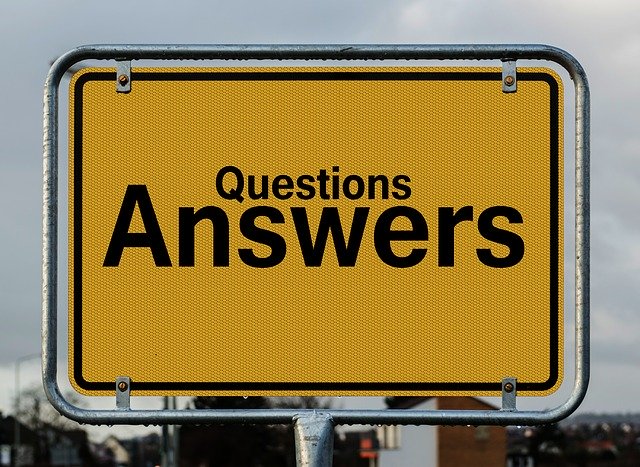問題 2.45 歳の女性.尋常性乾癬に対して抗 IL-17A 抗体の自己注射を続けている.最近,舌のほぼ全面に白苔が出現し,違和感があるため受診した.乾癬の悪化はない.適切な治療はどれか.
1. 抗菌薬を投与する.
2. 抗 TNF-α 抗体へ変更する.
3. 抗真菌薬を口腔内に投与する.
4. イソニアジド(INH)予防投与を開始する.
5. 生物学的製剤を中止し,PDE4 阻害薬を使用する.
乾癬の生物学的製剤の有害事象についての出題です。
生物学的製剤の使用による免疫抑制は使用前に患者さんにも説明する必要がありますよね。
IL-17A阻害薬には特徴的な感染症の有害事象が知られています。
第2問 IL-17A阻害薬の有害事象【解答:3】

IL-17A阻害薬の有害事象として、「カンジダ症」が挙げられます。
以下のような報告が2017年のBJDから発表されています。
Candida infections were reported in 4.0% of patients treated with brodalumab, 1.7% with secukinumab and 3.3% with ixekizumab vs. 0.3%, 2.3% and 0.8% of those assigned to placebo, ustekinumab or etanercept, respectively.
Saunte, D. M., et al. “Candida infections in patients with psoriasis and psoriatic arthritis treated with interleukin‐17 inhibitors and their practical management.” British Journal of Dermatology 177.1 (2017): 47-62.
| IL-17A阻害薬 | カンジダ症の頻度 |
| セクキヌマブ(コセンティクス) | 1.7% |
| イキセキズマブ(トルツ) | 3.3% |
| ブロダルマブ(ルミセフ) | 4.0% |
また上記の報告では、ウステキヌマブ(IL-12/IL-23阻害薬)でもカンジダ症の頻度が高そうです。
IL-17の機能低下のある遺伝性疾患でも、粘膜・爪・皮膚のカンジダ症が再発・持続する、とされています。
同じ報告では、カンジダ症のマネジメントにも触れられています。
- カンジダ症が疑われた場合、培養によるアゾール系抵抗性非albicansの除外
- 食道カンジダが疑われる場合には、内視鏡検査
治療については、
- 口腔カンジダや皮膚カンジダなら抗真菌薬の外用(アゾール・アムホテリシンB)
- 外用に抵抗性であったり、食道カンジダなら、フルコナゾール内服
- フルコナゾール内服に抵抗性であれば、感受性検査の結果をみて治療を決定
口腔カンジダには、「ハリゾンシロップ・ファンギゾンシロップ」を使用するかたもいらっしゃると思います。これらは、アムホテリシンBの製剤ですが、「消化管からは吸収されない」、とされていますね。また、ミコナゾールゲルも使用できます。(UpToDateではこちらのほうが推奨されています。)
そして、カンジダ症になったからといって、IL-17A阻害薬による治療を中止する必要はないとも記載されています。
ちなみに、2016年のIDSA(米国感染症学会)からのカンジダ症のガイドライン(2020年10月現在最新版)では以下のような記載があります。
こちらのガイドラインの推奨では日本で使用できる外用薬はありませんが、本文中には軽症ならまずは外用薬で対応する、と記載されています。
XVI. What Is the Treatment for Oropharyngeal Candidiasis?
Recommendations122. For mild disease, clotrimazole troches, 10 mg 5 times daily, OR miconazole mucoadhesive buccal 50 mg tablet applied to the mucosal surface over the canine fossa once daily for 7–14 days, are recommended (strong recommendation; high-quality evidence).
123. Alternatives for mild disease include nystatin suspension (100 000 U/mL) 4–6 mL 4 times daily, OR 1–2 nystatin pastilles (200 000 U each) 4 times daily, for 7–14 days (strong recommendation; moderate-quality evidence).
124. For moderate to severe disease, oral fluconazole, 100–200 mg daily, for 7–14 days is recommended (strong recommendation; high-quality evidence).
125. For fluconazole-refractory disease, itraconazole solution, 200 mg once daily OR posaconazole suspension, 400 mg twice daily for 3 days then 400 mg daily, for up to 28 days, are recommended (strong recommendation; moderate-quality evidence).
126. Alternatives for fluconazole-refractory disease include voriconazole, 200 mg twice daily, OR AmB deoxycholate oral suspension, 100 mg/mL 4 times daily (strong recommendation; moderate-quality evidence).
127. Intravenous echinocandin (caspofungin: 70-mg loading dose, then 50 mg daily; micafungin: 100 mg daily; or anidulafungin: 200-mg loading dose, then 100 mg daily) OR intravenous AmB deoxycholate, 0.3 mg/kg daily, are other alternatives for refractory disease (weak recommendation; moderate-quality evidence).
128. Chronic suppressive therapy is usually unnecessary. If required for patients who have recurrent infection, fluconazole, 100 mg 3 times weekly, is recommended (strong recommendation; high-quality evidence).
129. For HIV-infected patients, antiretroviral therapy is strongly recommended to reduce the incidence of recurrent infections (strong recommendation; high-quality evidence).
130. For denture-related candidiasis, disinfection of the denture, in addition to antifungal therapy, is recommended (strong recommendation; moderate-quality evidence).
Pappas, Peter G., et al. “Clinical practice guideline for the management of candidiasis: 2016 update by the Infectious Diseases Society of America.” Clinical Infectious Diseases 62.4 (2016): e1-e50.
口腔カンジダのレビューでも外用薬ならどんなものでもよいと記載されておりアムホテリシンBの製剤についても触れられていました。(Millsop, Jillian W., and Nasim Fazel. “Oral candidiasis.” Clinics in dermatology 34.4 (2016): 487-494.)
出典・参考文献

- Saunte, D. M., et al. “Candida infections in patients with psoriasis and psoriatic arthritis treated with interleukin‐17 inhibitors and their practical management.” British Journal of Dermatology 177.1 (2017): 47-62.
- Pappas, Peter G., et al. “Clinical practice guideline for the management of candidiasis: 2016 update by the Infectious Diseases Society of America.” Clinical Infectious Diseases 62.4 (2016): e1-e50.
- Millsop, Jillian W., and Nasim Fazel. “Oral candidiasis.” Clinics in dermatology 34.4 (2016): 487-494.
最後に、こんな風に考えたら答えがかわるかもしれない、というご意見がありましたら、
ぜひコメント・ご意見いただけると嬉しいです。



コメント
[…] 2019年度 第2問 […]
[…] 2019年度 第2問 […]